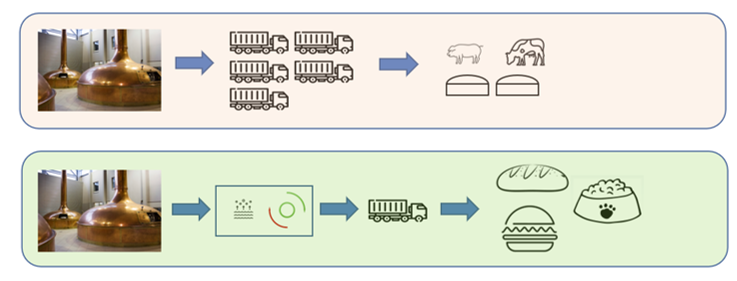Our dryers are designed to be used in decentral locations, suiting the typical production sites of by-products and to be powered using low grade residual heat (50-70’C) that is often available on-site. To illustrate the typical process/applications, below a depiction of the use case for brewers’ spent grain. Considerable savings are made in environmental/economical sense by reducing transport costs and since the spent grain is dried on-site shortly after production, product spoilage is prevented and a high value resource is recovered that can be used for food applications.

Potential applications can be found in:
- Brewers’ spent grain
- Pulp from pressing: fruit juices, e.g. for seed oil production
- Pulp from production of vegan milk alternatives such as oat milk, soy milk etc.
- Potato peels / remainders of potato processing
- excess sweet potatoes, carrots
- herbs
- seaweed
Since our dryers are designed to be drying at relatively low temperatures, nutrients are preserved. If no suitable source of residual heat is available, heat pumps can be applied to recover residual heat from the drying process itself to reduce energy consumption substantially compared to regular dryers.
Non-food applications:
- Drying of ingredients for petfood and fodder
- Drying biobased resources, e.g fibres from as plant cuttings, crop residues
- Drying of digestate/manure
